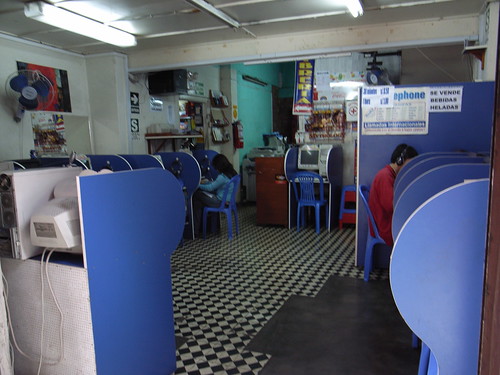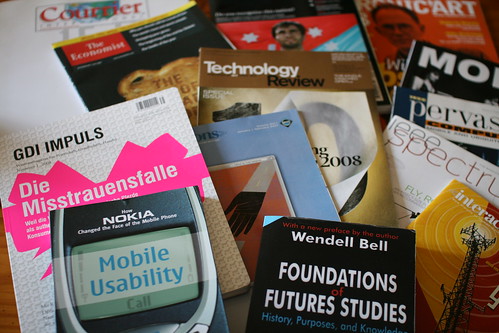The general attitude wrt to technologies when you read press or overhear café du commerce conversations is that cell phones, the information super-highway, the Wikipedia or the invention of the wheel cause automatic and inherent "impacts". People talk about how X or Z (replace X and Z by whatever tech you might be interested in) is reshaping our cities or creating new neural networks in our brains. Worse this kind of saying also make people think that technology pursue its own goals; in french people are use to say "On arrête pas le progrès" ("We can't stop progress"), as if techniques were some sort of autonomous being, creating its own necessity and leading to its own design outside society.
David Nye in his chapter "Technology" gives a very interesting (and quick) overview of theories that concern the relationships between technologies and culture. Although he accounts that old theories by McLuhan which described automatic impacts of technology are passé and fallen into disfavor, Nye highlights how the press and certain engineering researchers make deterministic utopian claims that technology is a "natural" force. In his overview, he describes 3 possibles approaches: externalist, internalist, and contextualist.
"Externalists examine a machine or technology within a cultural system or ambience, including studies of the reception of new machines, examinations of workers' response to new methods of production, comparative work on technology transfer, or studies of how a new machine or process changes hierarchical relations or social practices. In such approaches, the technical characteristics of machines usually are treated as subsidiary matters, and in some cases (but by no means all) technology may again seem a deterministic force.
Internalists reconstruct the history of machines and processes, with an emphasis on the role of the inventor, laboratory practices, and the state of scientific knowledge at a particular time. They chart the sequence that leads from one physical object to the next. (...) In contrast to the general public who often believe that "necessity is the mother of invention," internalists frequently find that inventions were not initially perceived as needed.
(...)
most technology scholars now tend toward contextualism; they see machines as integral parts of the social world. If technologies are shaped by the concerns of society, at the same time they have a reciprocal, transformative effect on the world around them. For contextualists, technology is not merely a system of machines with certain functions; it is deeply embedded in the social construction of reality. Technologies are not implacable forces moving through history; they are inseparable from social processes that vary from one time period to another and from one culture to another."
I don't know whether this classification is accepted in the field but I found quite convenient to get a summary like this, which makes sense of past readings in sociology and anthropology.
Why do I blog this? I have worked in the externalist frameworks in my undergraduate studies, and I've moved from this to more contextualists paradigms during my PhD but it was still very externalist. Especially if I judge form the vocabulary I use, or that I had to use because it was part of an HCI program in which cognitive sciences was important (and cognitive psychology is clearly not contextualist, in its most rigourous inception). Now I have clearly a more complete overview (not only with Nye but the ton of other books and papers by Latour, Simondon and others) and definitely use another vocabulary. And I try to take that into account in my work, be it when writing about locative media, teaching design research, organizing the LIFT conference or working on field studies.







 The screenshot depicts a GDF Artillery Interceptor Turret from Quake Wars (left) and the original device that inspired it: Raytheon’s Phalanx Close-in Weapon System (right). Both have been taken from an insightful
The screenshot depicts a GDF Artillery Interceptor Turret from Quake Wars (left) and the original device that inspired it: Raytheon’s Phalanx Close-in Weapon System (right). Both have been taken from an insightful 